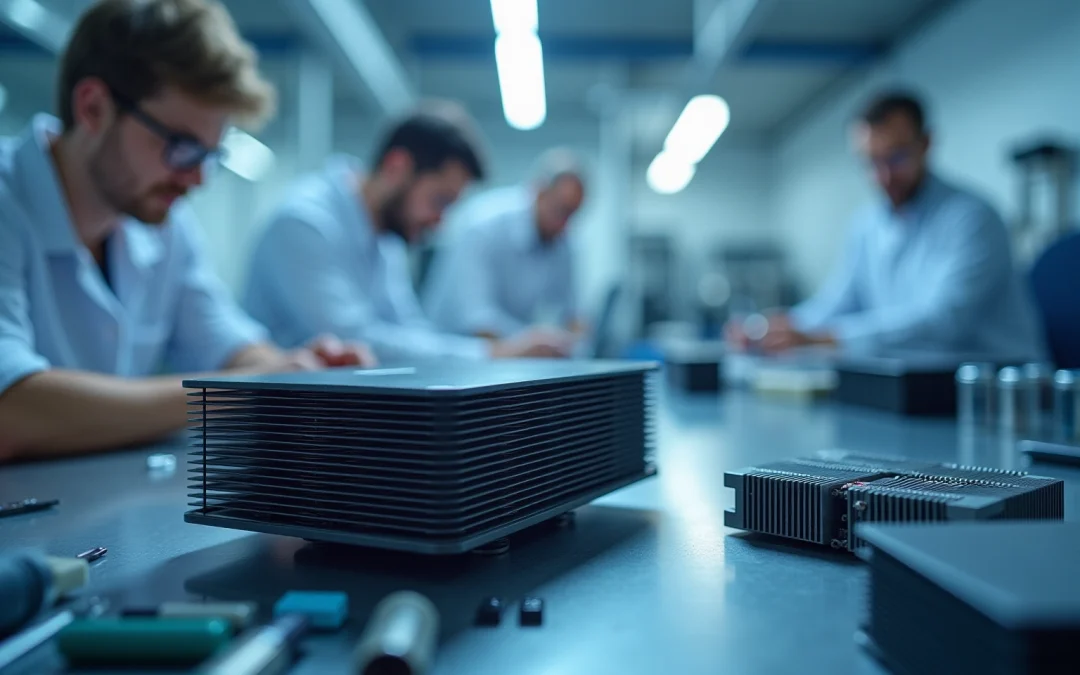Overview
The article titled “10 Essential Cooling Modules for Electronics Engineers” addresses the critical need for effective cooling solutions in the field of electronics engineering. As electronic devices continue to demand higher power in increasingly compact forms, managing heat becomes paramount. This piece underscores the significance of advanced cooling technologies, including:
- Peltier modules
- Liquid cooling systems
- Evaporative cooling units
These innovations not only enhance the performance of electronic devices but also bolster their reliability. Engineers must stay informed about these essential tools to ensure optimal functionality in their designs.
Introduction
The rapid evolution of technology has imposed unprecedented demands on electronics engineers, compelling them to pursue innovative cooling solutions that guarantee optimal performance and reliability. This article explores ten essential cooling modules that not only tackle the challenges of heat management but also enhance the longevity and efficiency of electronic devices across diverse applications. As engineers navigate the complexities of modern thermal management, a critical question emerges: which cooling technologies will spearhead the revolution in the industry and meet the escalating demands of high-powered electronics?
Gagner-Toomey Associates: Advanced Cooling Solutions for Electronics Engineering
Gagner-Toomey Associates stands at the forefront of advanced temperature control systems, meticulously tailored to address the unique challenges faced by electronics engineers. By forging partnerships with industry leaders like Delta and leveraging an extensive network of regional distributors, the company delivers state-of-the-art climate control solutions that significantly boost performance and efficiency.
These innovations are essential for improving the reliability and longevity of electronic products, especially as the demand for high-powered devices and electric vehicles continues to escalate. This unwavering commitment to excellence ensures that engineers have access to the most , thereby facilitating the development of next-generation electronic products.
Recent breakthroughs, including immersion temperature regulation technologies and the incorporation of nanomaterials, are revolutionizing the realm of thermal management, intensifying the need for innovative strategies in heat dissipation. As the market evolves, Gagner-Toomey remains a pivotal ally, empowering engineers to navigate the complexities of contemporary electronics thermal management.
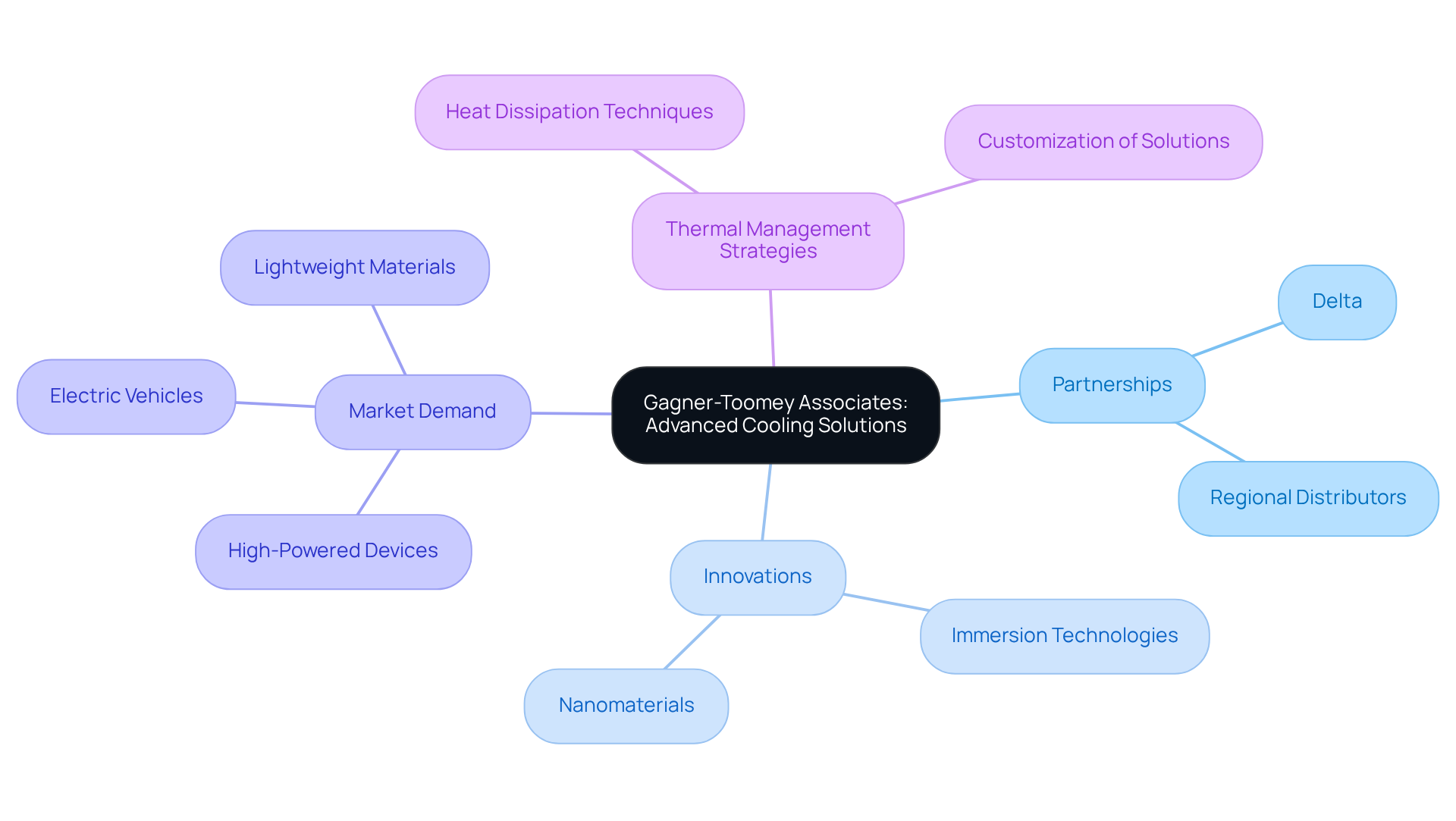
Valeo Front Cooling Modules: Enhancing Thermal Management in Electric Vehicles
Valeo’s front cooling module plays a crucial role in within electric vehicles, ensuring that vital components such as batteries and power electronics function within safe temperature limits. These modules leverage advanced airflow designs alongside high-performance materials to enhance heat dissipation, thereby improving overall vehicle efficiency and performance. By integrating Valeo’s cooling module within their temperature management systems, engineers can significantly mitigate the risk of overheating, which is essential for the longevity and reliability of electric vehicles.
In this landscape, Gagner-Toomey Associates emerges as the world’s largest manufacturer of both standard and custom air-movers, providing a comprehensive array of DC input tube axial fans and centrifugal blowers that are meticulously optimized for performance, efficiency, and low noise. Their products, available in sizes from 15mm to 910mm, cater to a wide range of industrial applications, including the electronics and automotive sectors.
The electric vehicle thermal management system market is projected to grow substantially, underscoring the increasing importance of effective thermal management strategies that include a cooling module. Gagner-Toomey Associates’ innovative temperature regulation techniques not only bolster safety but also enhance the overall performance of electric vehicles, aligning seamlessly with the industry’s drive towards more efficient and sustainable practices.
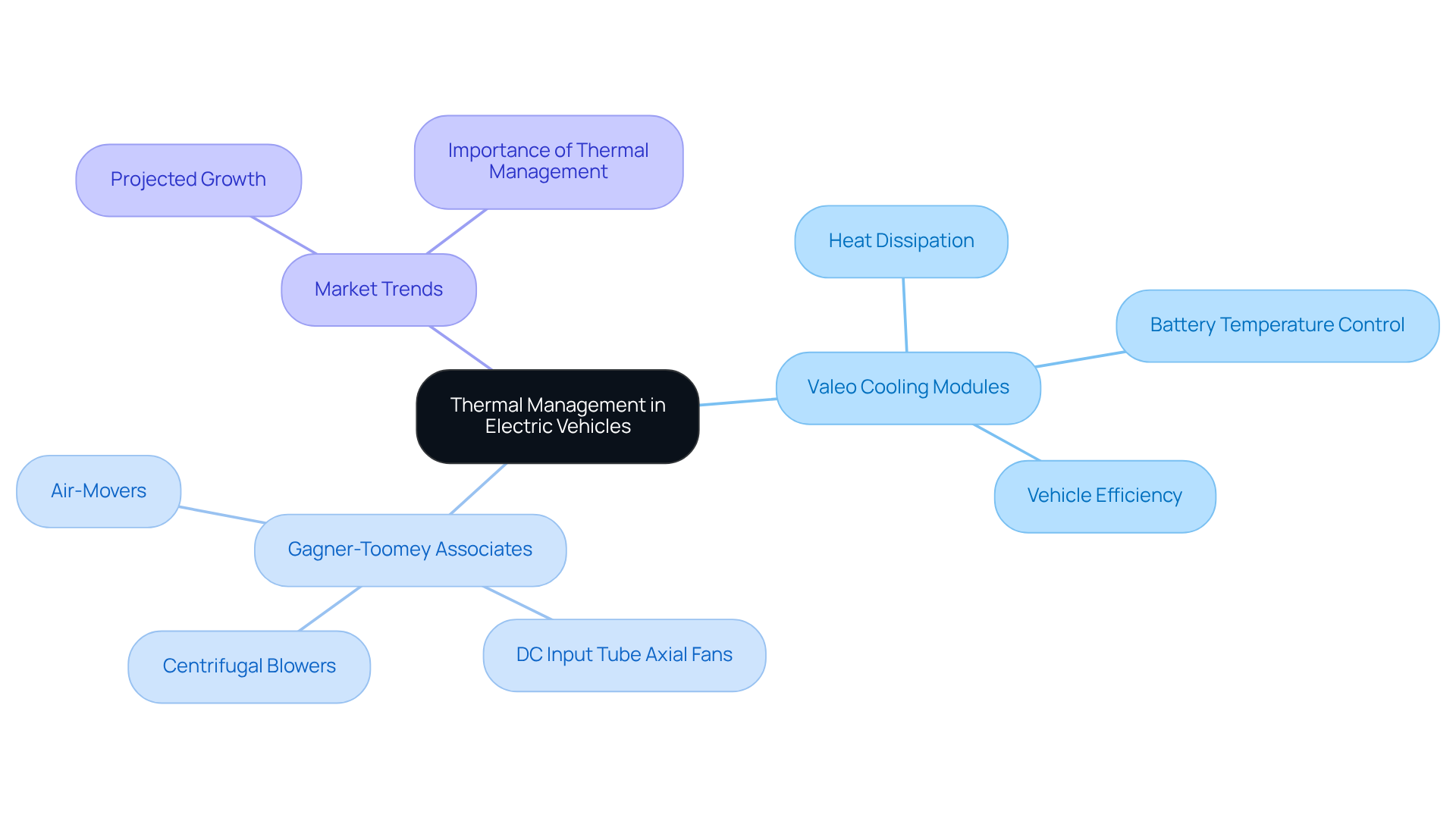
Peltier Module: Efficient Cooling for Compact Electronics
Peltier modules, commonly known as cooling modules, offer a compact and highly efficient solution for cooling small electronic devices. By employing the Peltier effect, these modules create a temperature difference that effectively extracts heat from sensitive components. This capability makes them , from portable coolers to advanced computing systems. Their deployment in devices such as portable medical coolers and DNA analysis equipment underscores their versatility and effectiveness in sustaining optimal operating conditions.
Additionally, thermoelectric coolers offer significant advantages in energy efficiency, operating with minimal moving parts, which reduces maintenance demands and contributes to the overall sustainability of electronic devices. As engineers continue to explore innovative temperature regulation technologies, the cooling module, specifically Peltier modules, emerges as a pivotal solution for achieving efficient thermal management in compact devices.
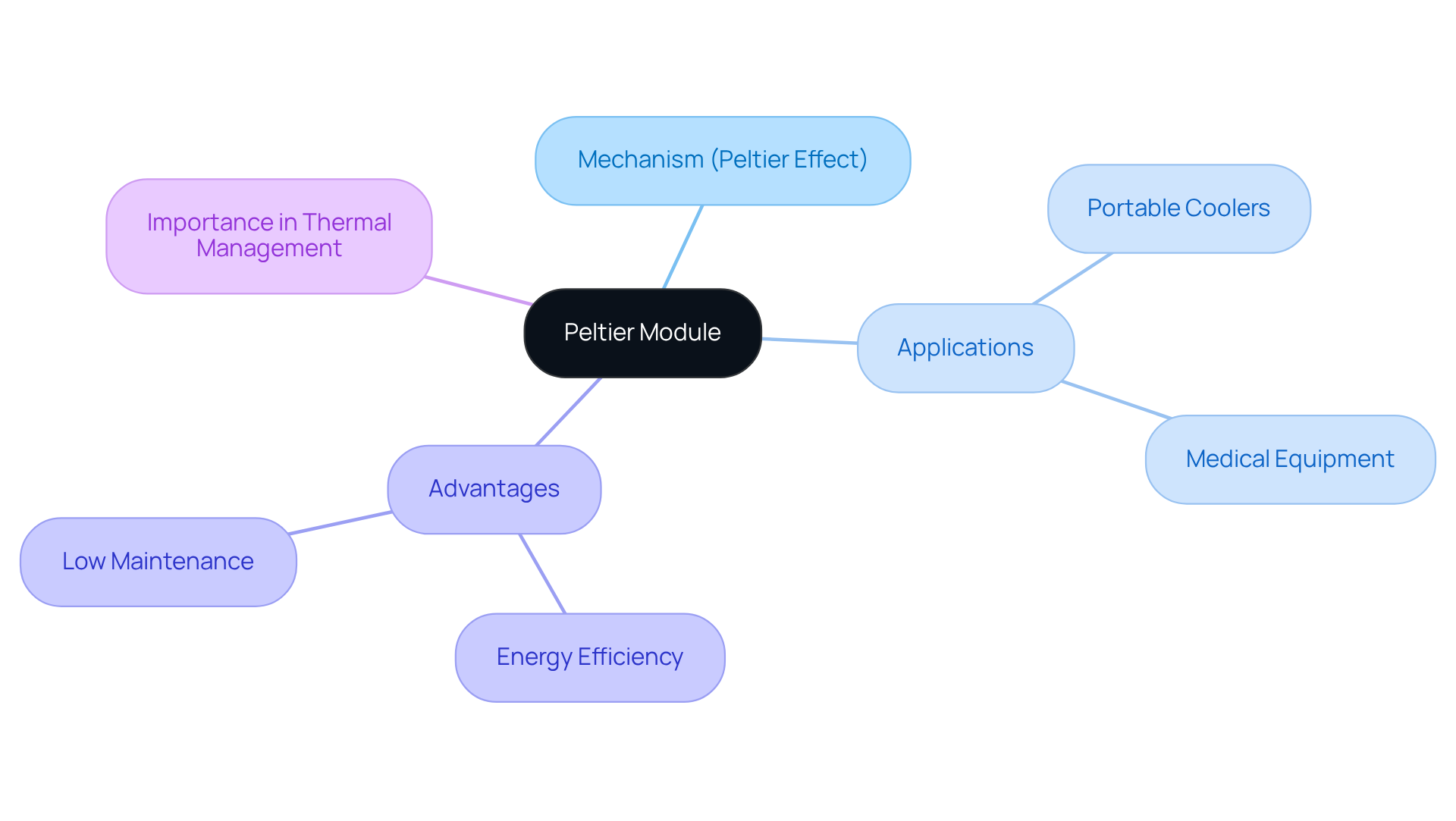
Liquid Cooling Systems: Essential for AI Data Center Performance
In AI data centers, where high-density computing generates significant heat, cooling modules for liquid temperature regulation methods are becoming increasingly essential. These setups employ a to effectively transfer heat away from critical components, ensuring optimal performance and reliability. By implementing a cooling module for liquid temperature regulation, data centers can enhance thermal management, significantly reduce energy usage—potentially by up to 90%—and extend the lifespan of their hardware.
As AI advancements continue to evolve, engineers must prioritize these systems in their infrastructure designs to meet the growing demands of sophisticated computing applications. For instance, immersion systems, which submerge components in non-conductive liquids, are gaining traction for their effectiveness in managing the extreme heat loads typical of AI workloads.
Furthermore, the integration of AI-driven temperature regulation optimization can lead to a 40% reduction in energy expenses, underscoring the importance of innovative temperature management solutions in contemporary data centers.
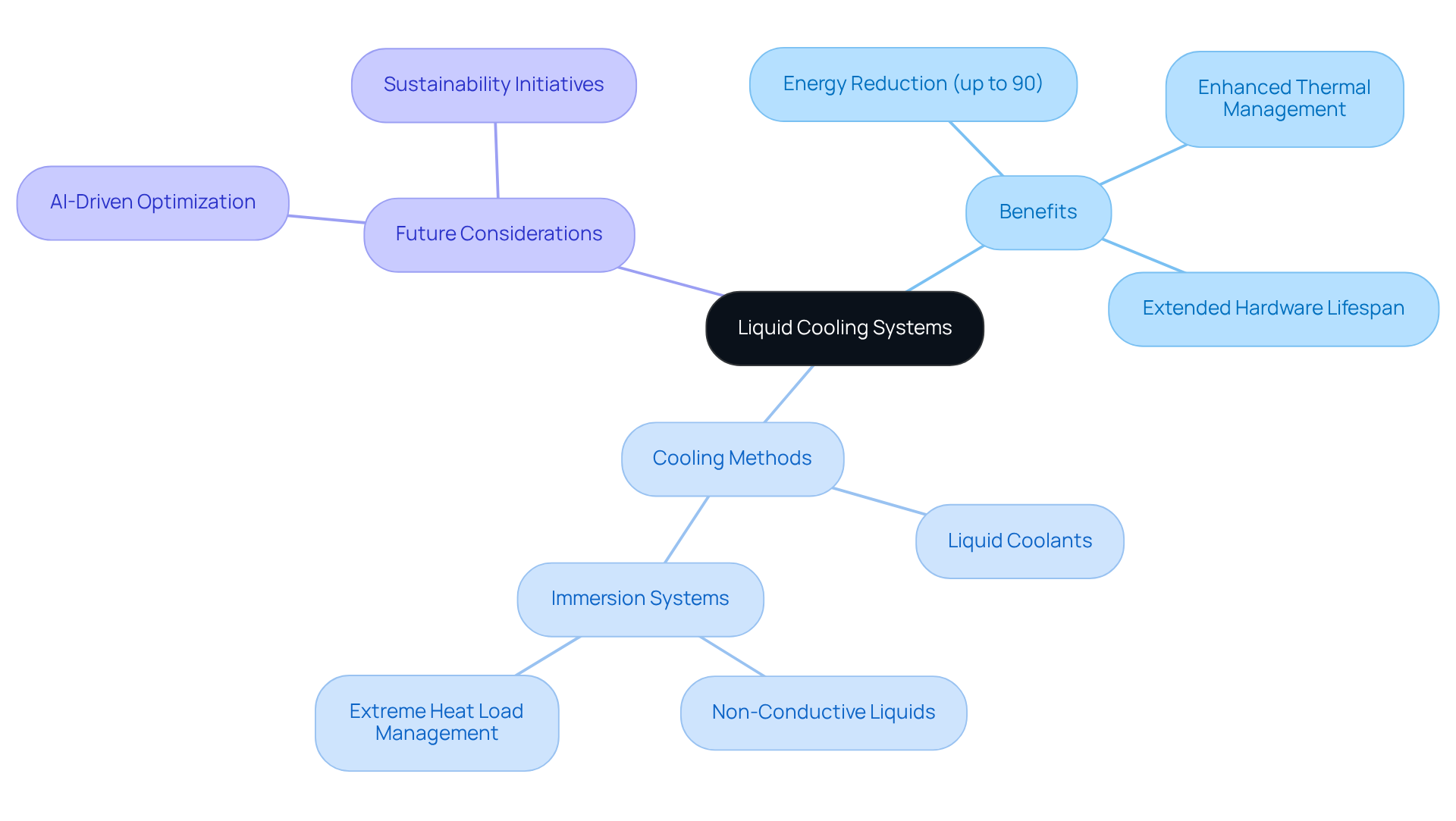
Rinnai Heating/Cooling WiFi Module: Smart Integration for Modern Systems
The Rinnai Heating/Cooling module represents a significant advancement in the integration of into traditional HVAC systems, particularly through the use of the cooling module. This innovative cooling module allows users to control their heating and ventilation remotely via a smartphone application, enabling features such as precise temperature adjustments and customized scheduling. By leveraging cutting-edge technology, engineers can substantially enhance the efficiency and convenience of HVAC units, addressing the increasing demand for automation in both residential and commercial settings.
As we approach 2025, the adoption of intelligent heating and cooling systems is expected to rise, driven by the necessity for improved energy management and user-friendly interfaces. The International Energy Agency reports that HVAC systems account for roughly 40% of the total energy consumption in commercial buildings, underscoring the critical need for energy efficiency in contemporary HVAC solutions.
Additionally, with the AIM Act and ODSHAR poised to phase out high-GWP refrigerants, the industry is on the brink of transformative changes that will further stimulate the demand for innovative HVAC technologies.
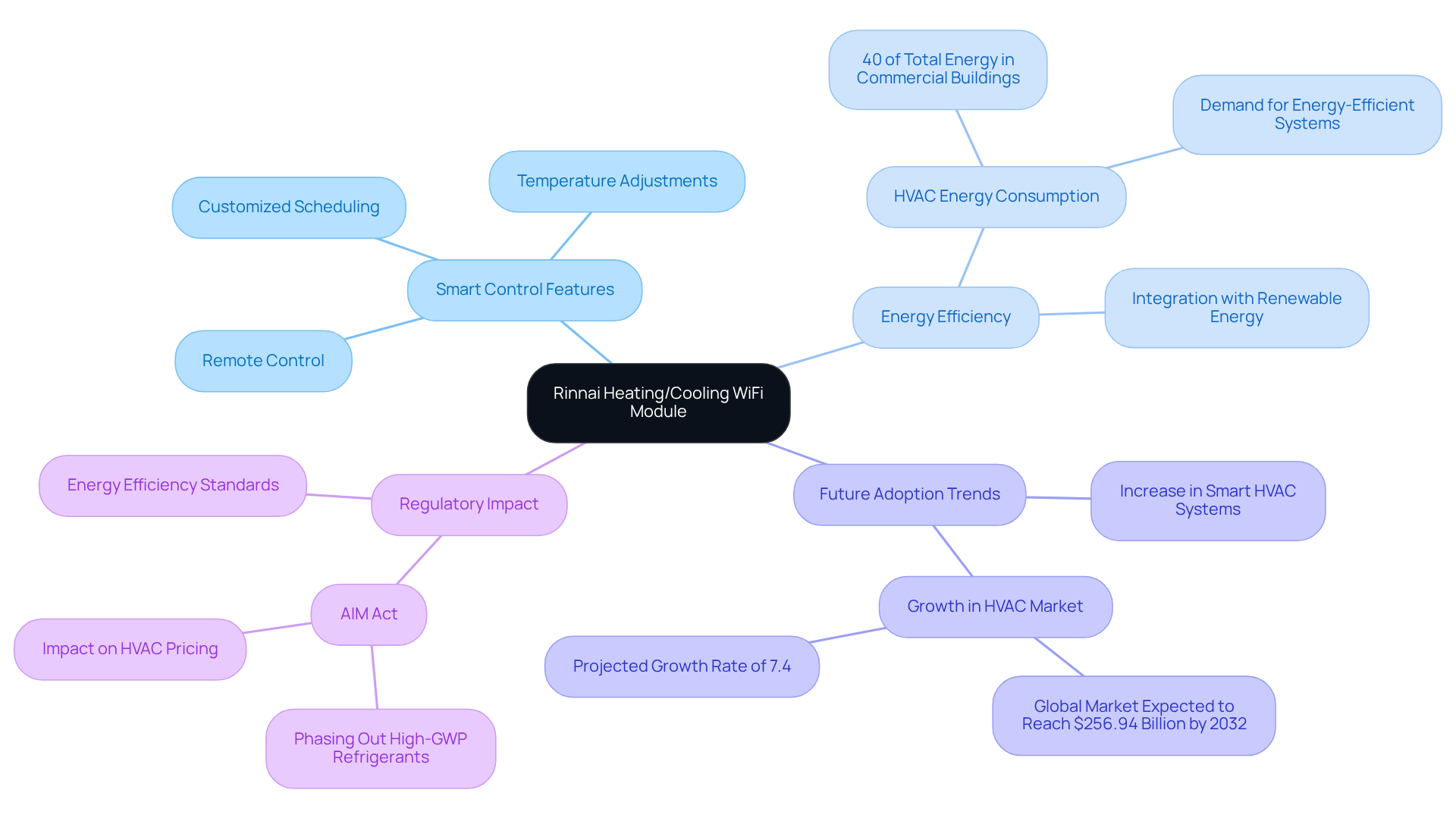
Evaporative Cooling Units: Sustainable Solutions for Temperature Control
Evaporative temperature regulation units present a sustainable solution for managing heat across diverse applications, ranging from industrial environments to residential spaces. By leveraging the natural process of water evaporation, these systems can achieve energy savings of up to 75% compared to traditional air conditioning methods. Research indicates that primary energy savings can reach 70-80% when compared to conventional coil systems, positioning them as an attractive option for energy-efficient building designs.
As the demand for sustainable solutions escalates, engineers can harness evaporative methods to enhance energy efficiency while mitigating environmental impact. This technology not only reduces energy costs but also improves indoor air quality by introducing fresh, humidified air, which can alleviate respiratory issues, particularly in arid climates.
‘Gagner-Toomey Associates’ expertise in power conversion products can further optimize the efficiency of these temperature regulation units, ensuring peak performance across various applications. As Qian Chen notes, “In hot and dry climatic regions, the direct evaporative refrigeration (DEC) method serves as a cost-effective and efficient alternative to conventional air conditioning units.”
With the increasing emphasis on eco-friendly practices anticipated in 2025, the integration of evaporative climate control solutions in building designs is set to become a prominent trend, aligning with global initiatives aimed at and promoting sustainability.
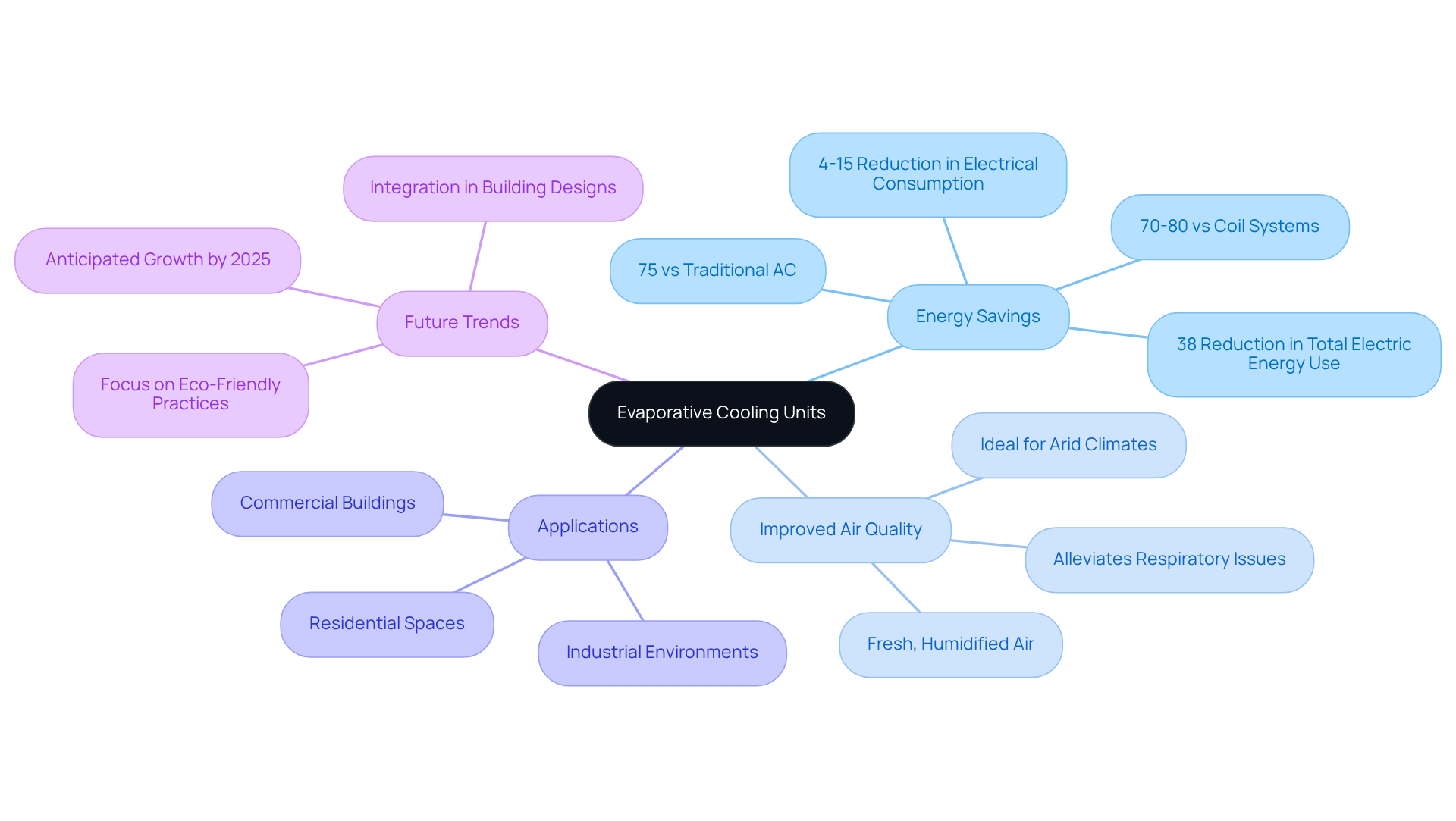
Cooling Towers: Managing Legionella Risks in Water Systems
Cooling towers function as essential cooling modules in industrial and commercial temperature regulation systems. However, if not meticulously maintained, they can become breeding grounds for Legionella, posing significant health risks. To mitigate the dangers associated with , engineers must implement comprehensive water treatment and monitoring protocols. Key strategies include:
- Regular Cleaning: Routine maintenance and cleaning of cooling towers are crucial to eliminate biofilms and sediment that can harbor Legionella.
- Temperature Control: It is vital to maintain water temperatures below 20°C, as warmer conditions promote bacterial growth. Regular monitoring ensures adherence to this standard.
- Biocide Application: The strategic use of biocides effectively reduces Legionella populations. Implementing a tailored biocide program based on water quality assessments is highly recommended.
- Water Quality Monitoring: Continuous monitoring of water quality parameters, including pH and turbidity, helps identify potential issues before they escalate into outbreaks.
- Compliance with Regulations: Adhering to local regulations regarding tower operation and maintenance is essential. For instance, New York City’s new tower regulations mandate registration, inspection, and yearly maintenance to prevent Legionella growth.
By implementing these best practices, engineers can significantly enhance the safety and reliability of tower operations, including the cooling module, ultimately protecting public health and ensuring compliance with evolving standards in 2025.
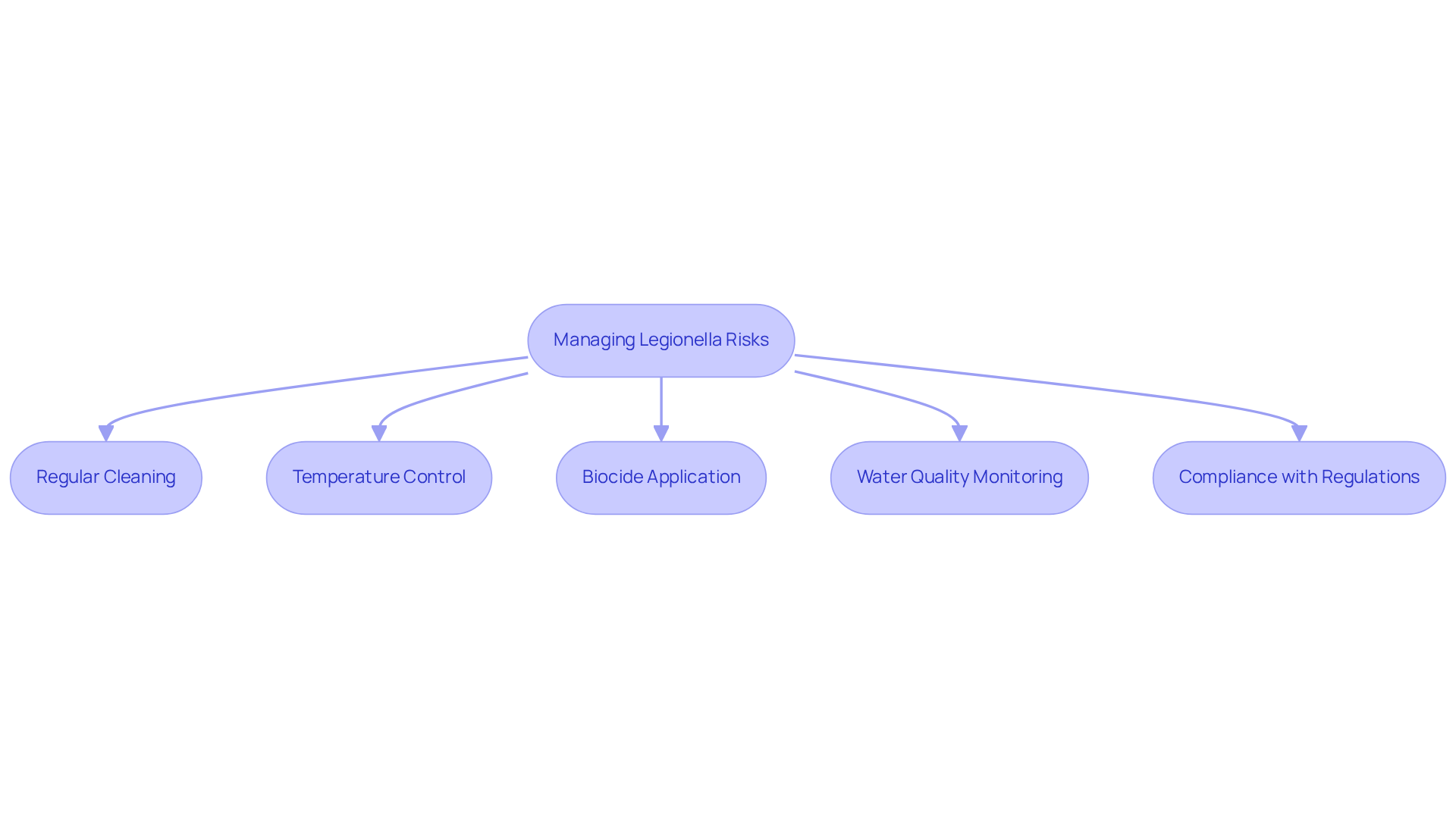
Cooling Modules for DSLR Cameras: Innovations in Photography Technology
Innovations in cooling modules for DSLR cameras are revolutionizing the photography landscape, enabling extended shooting durations and significantly enhancing image quality. These advanced thermal management systems, including a cooling module developed by Gagner-Toomey Associates, effectively lower sensor temperatures, which is critical for minimizing noise and optimizing performance during extended shooting sessions.
For example, cooled cameras can sustain sensor temperatures up to 40°C below ambient conditions, leading to a remarkable reduction in dark current noise—up to 32 times less at optimal temperatures. Notably, dark current diminishes by 50% for every 7-8°C temperature drop, underscoring the effectiveness of these refrigeration techniques.
As the demand for high-quality imaging escalates, engineers designing camera systems must prioritize the development of cooling modules to address the evolving needs of professional photographers and videographers.
Gagner-Toomey Associates, recognized as the world’s largest supplier of thermal management products, offers a comprehensive array of air-movers and refrigeration solutions for electronics, including specialized designs that incorporate a cooling module for compact applications.
The market for cameras equipped with thermoelectric temperature regulation technology was valued at USD 1.2 billion in 2024 and is projected to grow to USD 2.5 billion by 2033, reflecting the increasing importance of efficient thermal management in photography technology. This trend emphasizes the necessity for engineers to integrate into their designs, ensuring they deliver superior performance and reliability in their products.

Thermal Management in Power Modules: Key to High-Performance Electronics
Effective thermal management in a cooling module is crucial for sustaining high performance and reliability in electronic systems. Engineers are increasingly implementing advanced temperature regulation strategies, such as:
- Heat sinks
- Thermal interface materials
- Active heat management solutions
to efficiently dissipate heat generated during operation. Notably, the adoption of forced liquid temperature regulation has shown an average reduction of approximately 33% in thermal resistance (R) for devices embedded in power modules, thereby significantly enhancing their operational efficiency.
Recent advancements in temperature regulation technologies, exemplified by the lightweight thermal solutions developed by Advanced Cooling Technologies, Inc., have further optimized heat management in high-performance electronics. These innovative setups incorporate elements like , which effectively transfer heat from the center of the module to its edges, thus reducing thermal resistance and improving overall performance.
The importance of temperature regulation is paramount; temperature is a leading contributor to the failure of electronic components, responsible for about 55% of failures. By optimizing thermal management with a cooling module, engineers can enhance not only the efficiency and lifespan of power modules but also the performance of the entire electronic system. As electronics continue to shrink and power densities increase, the demand for efficient thermal management will only grow, underscoring the necessity for engineers to stay abreast of the latest developments in thermal systems.
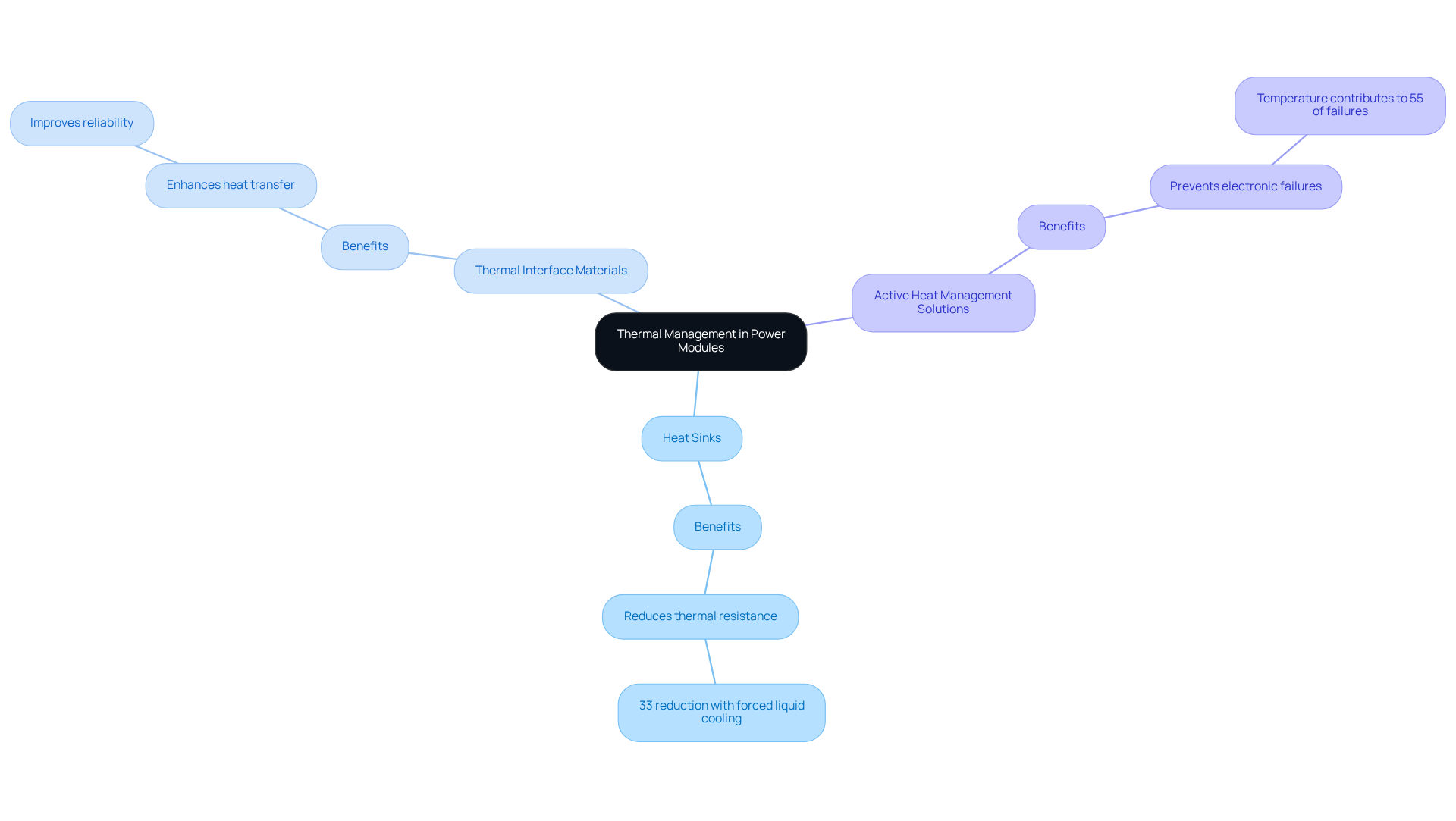
Community Forums: Sharing Insights on Innovative Cooling Solutions
Community forums serve as vital platforms for engineers to exchange insights and experiences concerning innovative solutions related to the cooling module. These discussions foster teamwork and knowledge sharing, enabling professionals to stay informed about the . By participating in these forums, engineers can obtain practical advice, tackle challenges, and explore new concepts that enhance their temperature management strategies across various applications.
Notably, 64% of visitors to online community sites are engaging more frequently than in previous years, highlighting the increasing relevance of these platforms for engineers. As Adrian Speyer, former Head of Community at Higher Logic, emphasizes, community building is essential for cultivating connections and disseminating knowledge.
Furthermore, with the Community Engagement Platform market projected to grow at a CAGR of 16.20% from 2024 to 2031, the importance of these forums in shaping future temperature regulation solutions becomes evident. Specific instances of collaboration within engineering forums, such as joint troubleshooting sessions and shared project insights, underscore the tangible benefits of knowledge exchange in advancing the development of cooling modules.
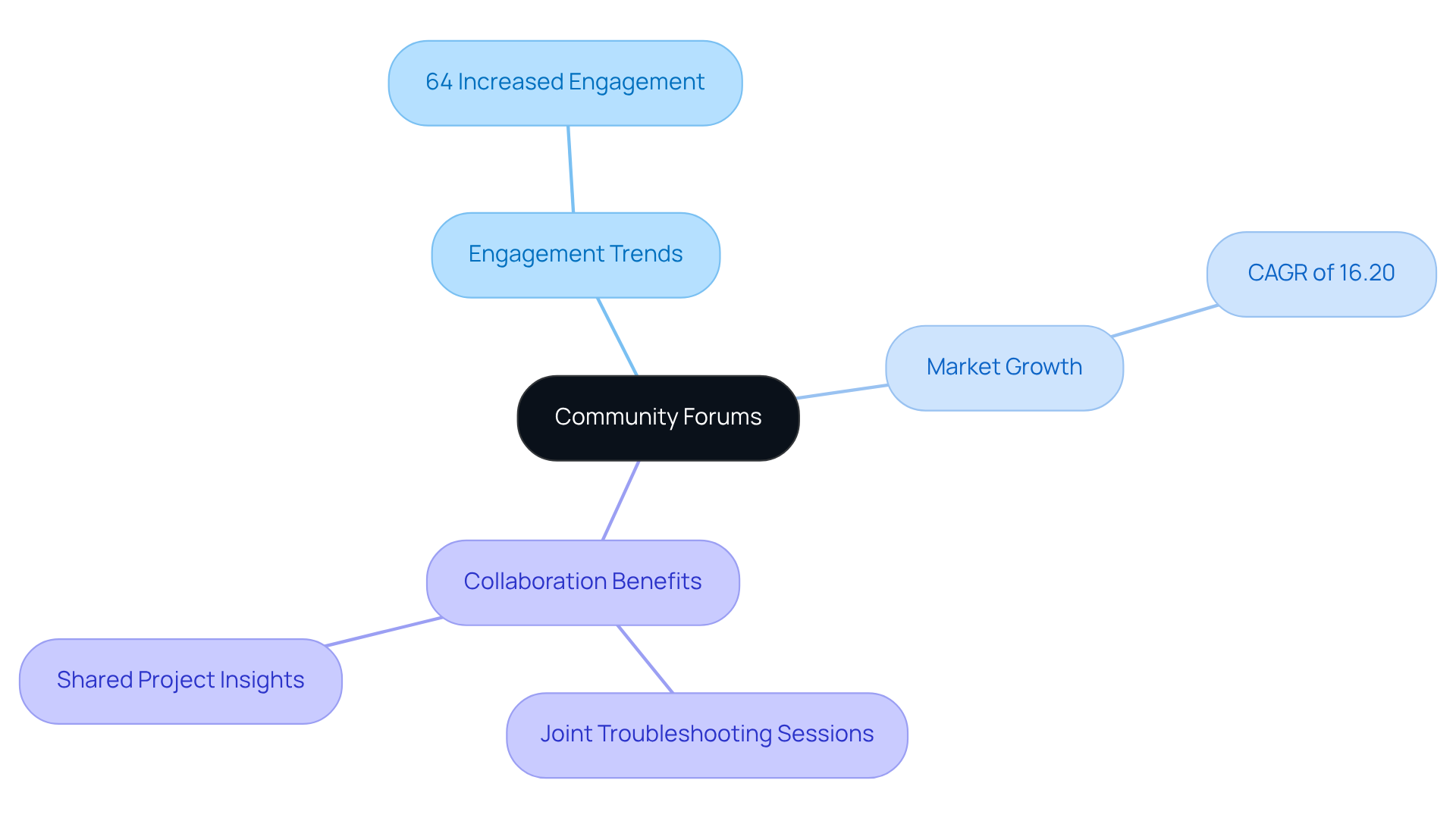
Conclusion
The exploration of essential cooling modules underscores their critical role in enhancing the performance and reliability of electronic systems across various applications. Advanced solutions, ranging from Peltier modules to liquid cooling systems, are indispensable for engineers aiming to meet the evolving demands of high-powered devices and electric vehicles. By understanding and implementing these technologies, engineers can ensure optimal temperature management, thereby extending the lifespan and efficiency of their products.
Throughout this discussion, key innovations such as Valeo’s front cooling modules for electric vehicles, Rinnai’s smart HVAC integration, and the sustainable advantages of evaporative cooling units have been highlighted. Each solution contributes to a more efficient and effective thermal management strategy, addressing the specific challenges faced in today’s electronics landscape. Moreover, the importance of community forums in fostering knowledge sharing and collaboration among engineers emphasizes the collective effort required to advance cooling technologies.
As the demand for efficient thermal management continues to rise, it becomes essential for engineers to remain informed about the latest cooling technologies and innovations. By embracing these advancements and engaging in collaborative discussions, professionals can significantly enhance their designs and contribute to a more sustainable future in electronics engineering. The integration of effective cooling solutions not only improves product performance but also aligns with global initiatives aimed at reducing energy consumption and minimizing environmental impact.
Frequently Asked Questions
What is Gagner-Toomey Associates known for?
Gagner-Toomey Associates specializes in advanced temperature control systems tailored for electronics engineering, partnering with industry leaders to deliver innovative climate control solutions that enhance performance and efficiency.
How do Gagner-Toomey Associates’ solutions benefit electronics engineers?
Their solutions improve the reliability and longevity of electronic products, especially in high-powered devices and electric vehicles, by providing effective temperature control technologies.
What recent innovations has Gagner-Toomey Associates introduced?
Recent breakthroughs include immersion temperature regulation technologies and the use of nanomaterials, which are transforming thermal management strategies and enhancing heat dissipation.
What role do Valeo’s front cooling modules play in electric vehicles?
Valeo’s front cooling modules optimize thermal management by ensuring that critical components like batteries and power electronics operate within safe temperature limits, thereby improving vehicle efficiency and performance.
What products does Gagner-Toomey Associates offer for thermal management?
They offer a wide range of air-movers, including DC input tube axial fans and centrifugal blowers, optimized for performance, efficiency, and low noise, catering to various industrial applications.
What is the projected growth of the electric vehicle thermal management system market?
The market is expected to grow significantly, highlighting the increasing importance of effective thermal management strategies, including cooling modules.
What are Peltier modules and their applications?
Peltier modules are compact, efficient cooling solutions that use the Peltier effect to extract heat from electronic devices, suitable for applications like portable coolers and advanced computing systems.
What advantages do thermoelectric coolers provide?
They offer energy efficiency, operate with minimal moving parts for reduced maintenance, and contribute to the sustainability of electronic devices, making them ideal for temperature regulation in compact applications.

